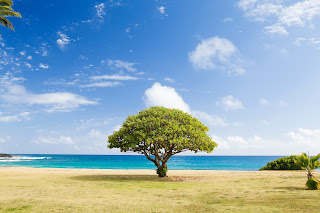The simple concept a Japanese nutritionist taught me to stay healthy.
Did you know that Japanese food itself like sushi or tempura isn't really that healthy? It's more of the combination of many nutrients in our diet is what makes the Japanese live healthy lives.
Today we will introduce a simple concept "magowayasashii" which can be used as a checklist for your everyday diet.
Why is Japanese food healthy?
Japanese people are known to have less obesity rate compared to other wealthy nations, and it became well-known that our diet is healthy when it was introduced in the McGovern Report.
But it seems a little odd to us that people think if it's Japanese food, then it's healthy. Our popular dishes like sushi or tempura, and ramen contain too many carbs. It's our teishoku style meal, including the bowl of rice with miso soup, pickles, small dishes like tofu, daikon radish, and main meat/ fish that adds up to taking enough varieties of nutrients needed for the body to function well.
But even for a Japanese, it's difficult to keep track of or plan out a balanced meal throughout the week.
So we nutritionists have "magowayasashii" in our minds when we plan our menu.
The keyword mago wa yasashii
Mago was yasashii was thought out by a food researcher and a medical doctor Dr. Yoshimura
It's a set of Japanese letter combination that helps us easily remember what to mix in our menu during the day.
Mago wa yasashii can translate to "Your grandson is kind" so those who speak Japanese will easily be able to remember the keyword.
Below is the breakdown of what each letter represents.
- Ma: Mame(beans): protein, vitamins, minerals, fiber. (Tofu or any beans)
- Go: Goma (sesame): protein, vitamin E, unsaturated fatty acid, minerals. (any nut)
- Wa: Wakame (seaweed): minerals, fiber. (nori seaweed, wakame, any seaweed)
- Ya: Yasai (vegetables): vitamins, minerals, (calcium), fiber.
- Sa: Sakana (fish): protein, EPA, DHA, minerals (calcium, iron)
- Shi: Shiitake (shiitake): fiber, vitamin D (any mushroom)
- I: Imo (potato): carbs, vitamin C, fiber. (sweet potato or any potato)
Outside of these, we should be eating 1 bowl of rice/meal worth of carbohydrates, and some kind of fruit 200g/day.
You shouldn't be snacking much, Japanese mostly eat heavier in breakfast and lunch so we don't start to pinch on snacks.
Fruit should be taken after meal so the blood sugar level don't go too high, or in between lunch and dinner hours.
It wasn't our custom to eat meat from Nara Period til Meiji Period (700's~1800's)from the adoption of Buddhism, so ideally the main dish should be fish.
But 1 meal/day of meat is ok, and you may eat as many eggs as you like.
The reason why the nutritionist started using magowayasashii
The nutritionist told me that she used to lecture total of 2000 patients in companies and clinics, and it was very challenging to personalise the menu to everyone.
She found a blog that talked about magowayasashii, and when she implemented in her menus, it would fit well to all her patients, and easy for the patients to follow, too.
The nutritionist also realized she lacks "wa"
When the nutritionist compared it to her usual menu, it would match well with magowayasashii meaning that the concept works.
She also found out that she sometimes leaves off "wa" or seaweed from her daily meal.
Seaweed is believed to help broaden sugar level spikes, and helps your gut activity, helping lessen the risk of obesity and cardiovascular disease. She would then start to add wakame seaweed to her miso soup, hijiki for small kobachi appetizers for dinner, and it helped her to have a better balanced diet.
The benefit of Magowa yasashii is that you don't have to go on a difficult nutrition course to plan your balanced menu. Try to cover all the letters in your daily meal, and you will start seeing health results.
Use Magowayasashii as your checklist for a balanced diet
In a modern world like now, we are all biased toward what we think is delicious and tend to stick too much to the same ingredients. Those that are too biased towards diet and only eat salads have to be careful, as lacking nutrients makes you want to eat more. That's why we need an easy guideline or checklist to make sure we are following a balanced diet.
First take note of what you usually eat, for a week or so. That will give you which letter you lack from magowayasashii.
Then figure out what is the easiest food you can implement to your menu to balance out the nutrients.
We understand you need to eat your Tapas, burgers, with beers and wine...etc. Try to diversify by ordering a salad with nuts in it or smoked salmon, or sauteed mushroom, ... and when you're home, you can reset it with a bowl of miso soup with the ingredients you lacked from your dinner.
To sustain a healthy diet, balanced healthy eating needs to become a habit.
By remembering Magowayasashii, you would start to say this and make the right choices to snack on nuts instead of potato chips, or choosing to add nori seaweed to your natto.
It may be challenging at first, so put the letter you lack to your miso soup, and have it in one of your meals or when you want to snack.
We've covered how to make miso soup here.




Comments
Post a Comment